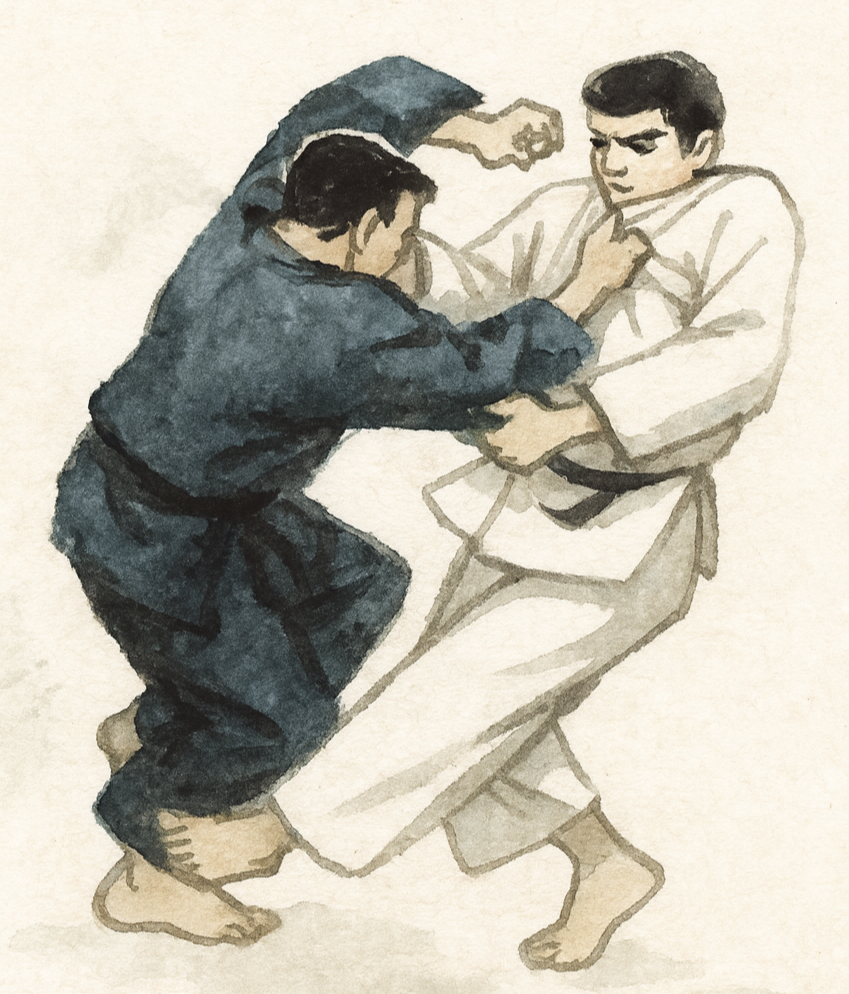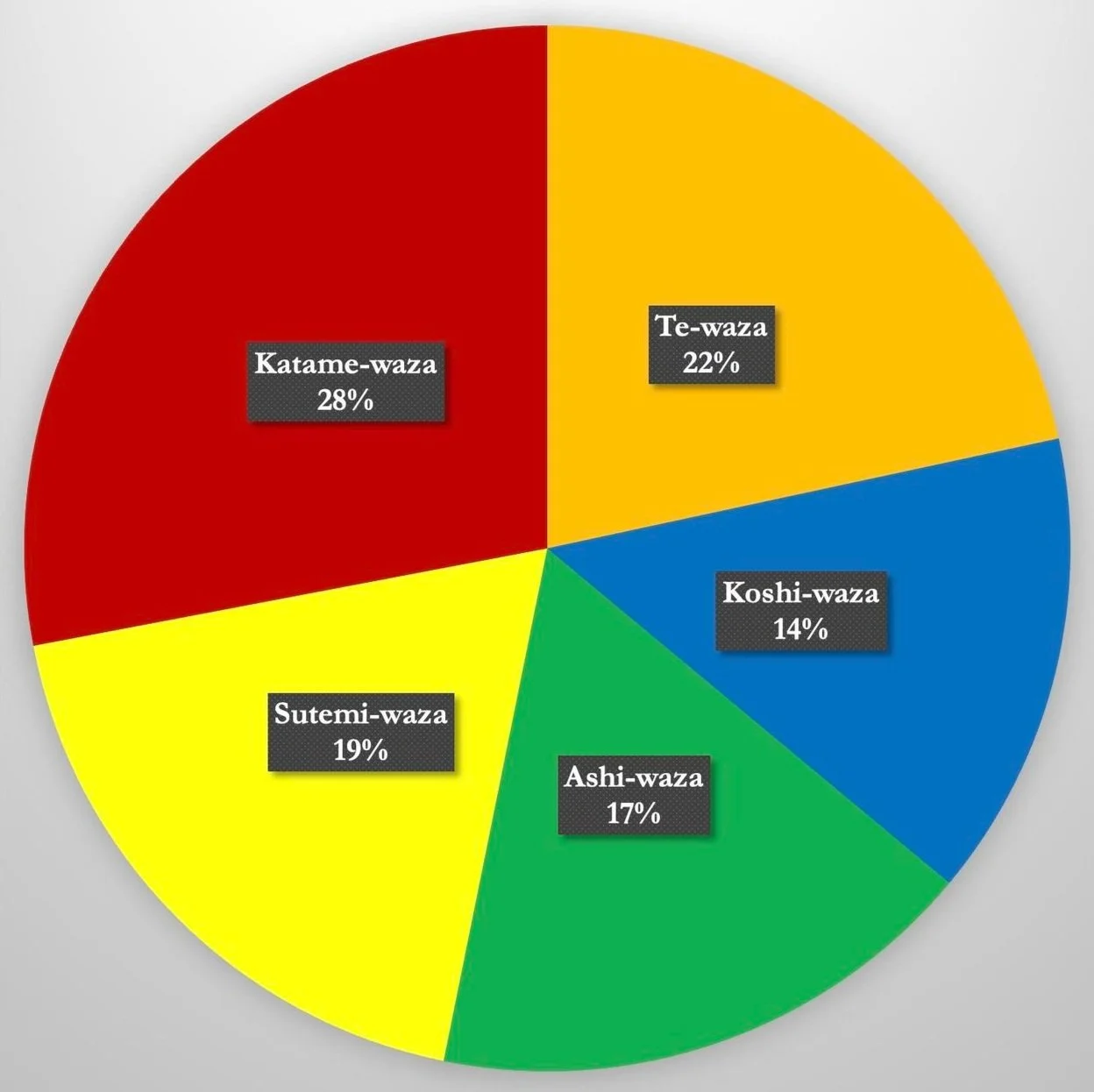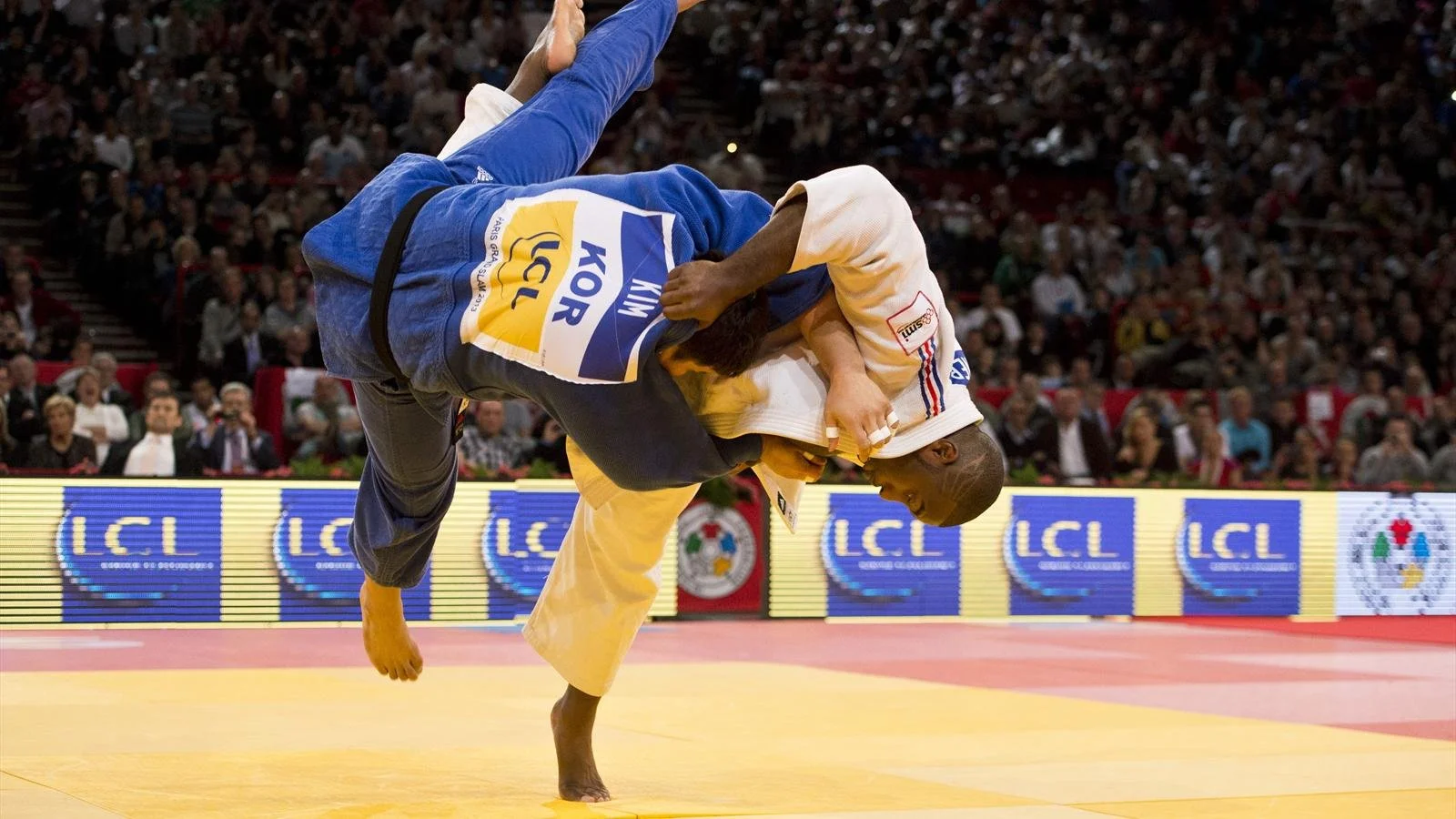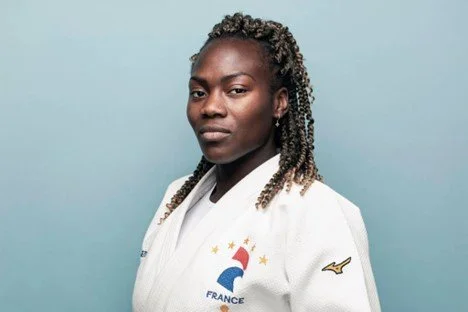The Judo Throw That Works in Tournaments, Street Fights, and Family Reunions (Sasae Tsurikomi Ashi)
Every Judo throw has its own flavor. Some are loud and dramatic, like a suplex on pay per view. Others are sneaky, like stealing the last slice of pizza without anyone noticing. Sasae Tsurikomi Ashi (a fancy way of saying “foot block throw”) is the perfect middle ground. Smooth, sharp, and efficient. One moment your opponent feels solid, the next they are flat on the mat wondering if you hacked gravity.
Let’s break it down with the holy trinity of Judo: Kuzushi, Tsukuri, and Kake.
What Is Sasae Tsurikomi Ashi?
The name sounds intimidating. Sasae Tsurikomi Ashi (sah-sah-eh tsoo-ree-koh-mee ah-shee) literally means “supporting foot lifting pull.” Translation: you are blocking their leg while pulling them forward, and suddenly their balance has trust issues.
It is all about three phases:
Kuzushi (off balance) where you make them stumble.
Tsukuri (entry or setup) where you slide into position like you are setting up the perfect prank.
Kake (execution or finish) where you commit to the throw and send them earthbound.
Get these three in sync and you will look like you barely touched them. Miss one and you look like you just tried to trip your grandma at Thanksgiving. Timing is everything.
Breaking Down the Move: Grips, Kuzushi, Tsukuri, Kake
Grips: Start with a collar grip and a sleeve grip. Collar grip is the steering wheel. Sleeve grip is the gas pedal. Together you decide where this ride is going.
Kuzushi: This is step one. Pull on the collar, rotate their body, and force their weight onto their near leg. You are basically turning their stance into a Jenga tower missing the bottom block.
Tsukuri: Now that they are wobbly, you step in. Block their near leg with yours, slide into the right angle, and set up the trap. Think of it like pulling out a chair just as someone goes to sit down. You want to be perfectly timed and perfectly placed.
Kake: Finally, the finish. Commit. Drive through with the block, keep pulling with your grips, and let physics do its thing. This is the payoff. The mat-slam. The dunk. The mic-drop.
The Magic of Timing: Watch the Counters
Sasae Tsurikomi Ashi is not a cheat code. Your opponent can still fight back. But if you know the counters, you can turn their defense into your offense.
Ouchi Gari (Major Inner Reap): If they step back to dodge your block, great. They just offered you their far leg. Sweep it and boom, they are down.
Kouchi Gari (Small Inner Reap): If they shift away too hard, they might expose their near leg. That is like leaving your phone unlocked with toddlers nearby. Reap it, finish the throw, and claim victory.
Using Sasae Tsurikomi Ashi as a Counter
Here is where the technique gets spicy. You can flip it around as a counter to their throws.
Counter to Tai Otoshi (Body Drop): As they drag you forward to drop you, block their leg mid pull and Reverse Uno card them onto the mat.
Counter to Uchi Mata (Inner Thigh Throw): When they try to hoist your leg, jam their near leg and turn their attack into your highlight reel.
It is martial arts Uno. Reverse their reversal.
Two Sneaky Setups
Pull Push Kuzushi: Yank their collar forward, push their sleeve back. It is like trying to steer a shopping cart with a broken wheel. When they stumble, step in with tsukuri, then finish with kake. Smooth, sneaky, satisfying.
Fake Seoi Nage (Shoulder Throw): Pretend you are going for a shoulder throw. They will shift their weight to defend. Perfect. That is your tsukuri moment. Slide in, block their leg, and boom, kake seals the deal.
This one is a crowd pleaser. Like juking left in basketball and driving right to the hoop.
Self Defense Bonus Round
Judo is not just for tournaments. It is practical. If someone charges you in real life, you do not need to slam them WWE style. With Sasae Tsurikomi Ashi, you time their rush, block their leg, and let their momentum do the dirty work. They are on the ground, you are still standing, and you get to leave the scene looking like you practiced self-defense and choreography at the same time.
The Takeaway: Why You Need This Throw
Sasae Tsurikomi Ashi is all about finesse. With kuzushi, tsukuri, and kake, you have balance breaking, setup, and finish in one clean sequence. It works as an attack, a counter, or a self-defense move. And it is efficient. Less effort from you, more face to mat time for them.
Like all great Judo techniques, there is no “best throw,” just the right throw at the right time. And once you master this foot block, you will start seeing opportunities everywhere.
So grab your gi, hit the mats, and try Sasae Tsurikomi Ashi. And when you finally land it clean, drop a comment here and tell me the story. Did your partner give you that “seriously?” face? That is the universal sign of success.
A Stealthy Reflection
At Des Moines Judo Academy, we follow the curriculum, but we also bend it. Sometimes we go out of order because we want everyone to see what Judo has to offer, not just the pieces tied neatly to belts and levels. Yes, some techniques are complicated and demand hours of training and solid ukemi to keep it safe. But it is inspiring, and it fills the cup. For me, Sasae Tsurikomi Ashi spilled over from other arts. In Silat there is Puter Kepala (Head Turn). A failed Sasae often becomes the perfect setup for a successful Puter Kepala. I was able to learn the throw faster because I had other fundamentals baked in. That is the beauty of this technique. It is considered a beginner’s throw, but when mastered it opens doors. It builds fundamentals that carry into everything, inside and outside Judo. Even in Kali stick fighting, the same lifting and pulling principles appear. Add footwork and positioning, and suddenly you are creating across arts because the fundamentals are tattooed into your DNA.
Mastering the High-Percentage Throws for Ippon: Stats from the Best Judoka
Judo is all about timing, technique, and precision. While there are dozens of throws to learn, certain throws consistently lead to Ippon (the perfect throw), which ends the match. But which throws have the highest success rates, and what sets the world’s best Judoka apart in their ability to execute these throws? Let’s dive into the stats behind high-percentage throws and take a look at some of the top Judo players and the techniques that help them dominate on the mat.
What Makes a Throw High-Percentage for Ippon?
In Judo, Ippon is the ultimate goal of any throw. It’s awarded when a competitor successfully throws their opponent onto their back with force, speed, and control. However, not all throws are created equal. Some throws have a higher success rate due to their ability to off-balance the opponent quickly and forcefully.
High-percentage throws for Ippon tend to share a few common features:
Strong kuzushi (off-balancing): Creating a strong imbalance is the first step in setting up any successful throw.
Proper timing: Knowing when to execute the throw is critical. The best Judoka can sense the exact moment to attack.
Adaptability: Being able to switch between different throws depending on the opponent’s movement and reactions.
Top Judo Players and Their High-Percentage Ippon Throws
The world’s best Judoka have refined certain throws that they’ve used to earn consistent victories. Let’s take a look at some of the top players in Judo and their high-percentage throws for Ippon.
1. Teddy Riner (France) – Uchi Mata (Inner Thigh Throw)
Teddy Riner, one of the most decorated Judo players in history, has won numerous World Championship titles and Olympic gold medals. His signature move is the Uchi Mata (inner thigh throw).
Throw Breakdown: Riner uses his massive size and incredible control to execute a flawless Uchi Mata, where he sweeps his opponent’s leg while simultaneously lifting them with his body. Riner’s ability to maintain perfect kuzushi while using his strength and leverage makes this throw one of his highest-percentage techniques.
Success Rate: Uchi Mata is one of the highest-scoring throws in his repertoire, delivering Ippon with great consistency due to his ability to get his opponent’s leg off the ground and control their movement.
Teddy Riner performs a perfect Uchi-Mata
2. Shohei Ono (Japan) – Seoi Nage (Back Carry Throw)
Shohei Ono is known for his Seoi Nage, one of the most successful throws in Judo. His technique has helped him win multiple World Championships and Olympic gold.
Throw Breakdown: Seoi Nage is a shoulder throw where the Judoka uses their hip and shoulder to lift the opponent onto their back, creating a clean Ippon. Ono’s success lies in his flawless timing, quick entry into the throw, and precision in lifting and throwing his opponent.
Success Rate: Ono has a high success rate with Seoi Nage, particularly when he enters the throw while his opponent is off-balance or attacking. His ability to land Ippon with this throw makes it his go-to technique in major competitions.
Shohei Ono performing O-Soto-Gari (for some reason) using an armpit grip.
3. Clarisse Agbegnenou (France) – Uchi Mata (Inner Thigh Throw)
Clarisse Agbegnenou is a dominant force in the women’s Judo world and has earned multiple World Championship titles. Like Riner, she excels with Uchi Mata, using it to secure many of her wins.
Throw Breakdown: Agbegnenou’s Uchi Mata is characterized by precise movement and exceptional timing. She utilizes her footwork and kuzushi to set up the leg sweep with devastating effectiveness. By lifting her opponent’s leg and guiding them over her, she secures Ippon with smooth control.
Success Rate: Uchi Mata is a key element of Agbegnenou’s strategy and results in frequent Ippon victories. She’s one of the most successful women in Judo with this move, frequently using it to dominate her opponents.
Clarisse Agbegnenou using expression based Kusushi
4. Ryu Shichinohe (Japan) – Tomoe Nage (Circle Throw)
Ryu Shichinohe, a competitor from Japan, is known for his creative and effective use of Tomoe Nage (circle throw), a throw that isn’t seen as often in modern Judo, but when executed correctly, it’s a powerful weapon.
Throw Breakdown: Tomoe Nage involves the Judoka using their body to create a circular motion, pulling their opponent over their head and onto their back. Shichinohe’s timing and positioning make him especially dangerous with this throw, as he can surprise opponents with quick and fluid movements.
Success Rate: Shichinohe’s ability to land Ippon with Tomoe Nage is impressive, especially given how unexpected the move is for opponents. This throw isn’t as commonly used at the highest levels but has been incredibly successful for him when executed at the right time.
5. Naohisa Takato (Japan) – Ashi Waza (Foot Techniques)
Naohisa Takato has made his mark in the Judo world with his Ashi Waza (foot techniques), particularly his Kouchi Gari (small inner reap) and De Ashi Barai (advancing foot sweep).
Throw Breakdown: Takato is known for his lightning-fast footwork. He uses Ashi Waza to attack his opponent’s legs, off-balancing them quickly and sweeping them off their feet with precision. His De Ashi Barai is a signature move that takes advantage of his opponent’s step forward to swiftly sweep their foot.
Success Rate: Takato’s foot sweeps result in high rates of Ippon. He is quick, agile, and precise, making him a dangerous competitor when it comes to Ashi Waza.
Naohisa Takato being goofy.
The High-Percentage Throws: Why Timing Matters
While the above Judoka have their favorite, high-success throws, the real secret to their success lies in timing. Ippon isn’t about just throwing an opponent, it’s about throwing them at the right moment. These high-percentage throws work because the Tori takes advantage of the opponent’s off-balance position and seizes the opportunity to execute the throw.
The success of a throw depends on:
Kuzushi (off-balancing): You need to get your opponent’s weight onto the leg or position that is vulnerable to your attack.
Timing: Knowing when your opponent is most vulnerable to a throw and reacting instantly.
Commitment: Once you’ve set up the throw, committing to it fully is key to executing it successfully.
The Takeaway: Mastering High-Percentage Throws
While there are many throws to master in Judo, certain throws consistently produce high rates of Ippon. Judoka like Teddy Riner, Shohei Ono, and Clarisse Agbegnenou have made their names with certain signature techniques that they’ve perfected through practice, timing, and precision.
For beginners and seasoned competitors alike, focusing on mastering these high-percentage throws can give you an edge in competition. Whether it’s Uchi Mata, Seoi Nage, or Ashi Waza, these techniques have been proven to work time and time again at the highest levels of Judo.
So, the next time you hit the mat, remember that mastering these high-percentage throws could be the key to landing that Ippon and taking your Judo to the next level.
Your Turn:
What are your high-percentage throws? Why do you use them, and how do they work best for you? Also, who is your Judo hero or inspiration? Let’s hear who motivates you and what throws you’ve mastered from their playbook. Share your thoughts in the comments below!
Far Travelling Pair Promoted Together
From Right to Left - Sensei Pohl, Ian Schaff, Jon Milliedge, Sensei Hilleshiem
Ian and Jon, regulars at Saturday open mats, have taken the next step on their journey into the Way of Gentleness, by being promoted to “gokyu” or orange belt. The duo normally spend several hours every Saturday developing their skills from approximately 9:30 AM until the open mat host is done the day or events demand they yield (usually around 12:40 PM), so they can work master what they learn training with each other during weekday. On May 3rd, 2025, they chose to forego training to instead demonstrate what they’ve learned in the pursuit of recognition of their hard won skills. Testing was overseen by Sensei Hilleshiem and Sensei Pohl, who determined the two passed muster, while a few stragglers looked on.
Ian, a student of jujitsu, bujinkan, and kali-silat in addition to Judo. As to be expected his “newaza” or “ground fighting” (the portion of combat that takes place after one or more of the combatants has fallen to the ground) is more developed than his “nage waza” or throwing techniques, he not only demonstrated competence with the required number of throws, but demonstrated an affinity for tai-otoshi, o-goshi, and uchi-mata. When not training, Ian enjoys tabletop roleplaying games, making mead, hunting, and spending time with his beloved dog.
Jon, a judoka with an MMA (Mixed Martial Arts) and wrestling background, who also cross trains in jujitsu and bujinkan, has a more robust standing game of the pair, despite Ian having a better flare for technical details. Jon also posses boundless positivity and enthusiasm, which makes long training sessions go by and the blink of an eye. While his foot sweeps won him gold and silver in the Governor’s Cup earlier this year, and even earned praise from Sensei Parkhill, Jon chose to instead show off his o-soto-gari, ippon seoi-nage, and tani-otoshi, all of which he’s been drilling endlessly since March. When off the mat, Jon spends most of his time with his family, being married and a father.
Rokkyu Duo Clean Up at 2025 Governor’s Cup
From Left to Right - Kasten Lappe, Jon Milledge, Ian Schaff
On March 15th, 2025, two yellow belts or “rokkyu” from the Des Moines Judo Academy made their competitive debut at the Iowa Governor’s Cup Tournament, which was hosted by Teikiatsu Judo in Ames, Iowa. Adult competitor turnout was a sharp decline from 2024, during which sensei and academy founder Bret Parkhill made his final regular appearance coaching. Despite adult participation being thinned by scheduling and recent injuries, Karsten Lappe and Jon Milledge made up for quantity with quality.
Karsten, is a young man of 22 years of age who attends most, if not all, weekday classes at our dojo and occasional Saturday open mats. Standing 6’7”, Karsten fought in the 220lbs+ senior men’s open rank, winning both his matches against the green belt, or “yonkyu,” Brent Shipley from Sempai Judo. Karsten’s first match was won by application of the “renraku waza'“ (combination technique; when two or more attacks are made in sequence) Uchi-Mata, followed by O-Soto-Gari, earning an “Ippon” (full point, which wins a match). His second match was won by scorring Ippon via “Osae Komi” (pin), a varient of Yoko-Shiho-Gatame (commonly referred to as side control in jujitsu), after taking his opponent to the ground without scoring, securing the gold medal for his division. A southpaw, Karsten is known in our club for his explosive strength, preference for extremely high collar grips, and his love of Uchi-Mata, which he’s striven to improve since he first arrived at the Des Moines Judo Academy.
Jon Milledge, a man of 35 who stands at approximately 5’8”, fought in both the senior men’s middle weight novice, and the senior men’s 161lbs & Under open rank divisions. Jon, an mma fighter in the process of winding down his mma career, is one of a pair of far travelling Judoka who consistently grace our dojo at Saturday open mats and the occasional Thursday class. Jon fought five total matches between the two divisions. While Jon lost his first match by throw for Ippon, he went on to only have one more loss for the day, by submission while attempting to pass guard. Jon’s extensive drilling of “ashi waza” (leg/foot techniques), particularly foot sweeps, showed, as he scored “Waza Ari” (half point, two of which are required to win a match) by both Sasae Tsurikomi Ashi, and De Ashi Barai. While he did win one additional match by submission, the highlight of the adult competition of this tournament was an Ippon scored using Nidan Ko-Soto-Gari as a counter to Uchi-Mata, further demonstrating Jon’s ashi waza dominance. Sensei Parkhill, reviewing a video of the match, commented that the counter was “a thing of beauty!” Jon took gold in the open rank, and silver in the novice.
Despite being the only adult judoka to take to the mat or “tatami” to represent our Academy at this tournament, they were not alone. Ian, Jon’s long time training partner and travelling companion, was also present to give his support despite being wounded. Jon’s family was also present to cheer him on, and were enthusiastic, if frequently confused. The three are seen together in the cover photo for this entry, celebrating their victory.








